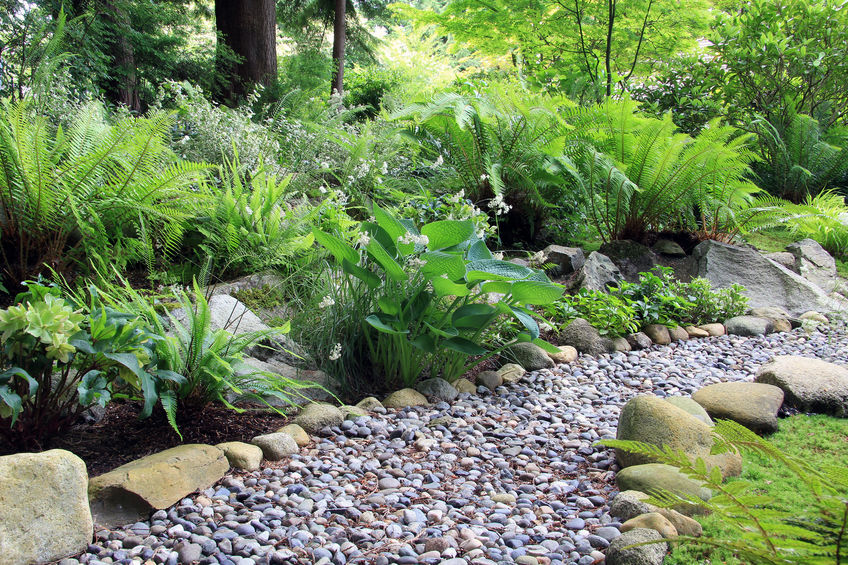Planting season is here! If you just don’t know what to do with your shady backyard, there are a lot of alternatives to plain old hostas. You can get variety and color with some knowledge and planning.
Where’s the sunshine?
Map out your garden or other area to be planted. Make notes about how much sunlight different areas get, and at what time of day. This will give you an idea of the variation in your yard or garden from full sun to partial shade to full shade.
Also, know your soil. Is it dark, soft and loamy? Thin and lean, or rocky? Sandy or heavy and clay-like? This will have the biggest impact on the kinds of plants you choose. Match plants’ soil preferences to the soil in your yard or garden.
Probably the best-known shade plant is the hosta. It’s easy to grow, and there are many sizes and colors. Ferns also grow well in shady areas. With their fine leaves, they offer a good visual contrast with hostas.
Sedge grasses from the carex family also add variety in shape and color. Ligularia, related to the sunflower, has broad, dark leaves and orange or deep-yellow flowers with long petals. It’s a good choice for partial shade.
Perennials add color
Astilbes have lots of bright flowers and grow well in part sun, such as where sunlight filters through the leaves of a shade tree. They need rich soil, so add compost and water them well.
Bleeding hearts are known for colorful flowers and prefer shade and organic, rich soil. Mulch them well.
Primroses bloom in early spring with a wide variety of sizes, shapes and colors. They’re hardy and adaptable, and prefer light shade and well-drained soil.
Jacob’s Ladder is a forest plant with white, pink, blue or yellow flowers. It prefers shade and moist, rich soil. Once established, it needs little care.
Lamiums come in a range of colors, but the varieties with yellow flowers grow better in shade. Be careful, though, because they tend to spread very easily in most soils.
Annuals
Many annuals also prefer shade, such as impatiens and some pansies.
Calendulas, or pot marigolds, are very easy to care for and grow in containers or beds. They prefer cooler temperatures and shade, but tolerate sun as well. Cleomes grow in full sun to partial shade—but they also spread very readily. Nocitiana, or flowering tobacco, prefers partial shade and well-drained soil.
Fuchsias and begonias like partial sun, as too much heat can stress them. Torenia, or Wishbone flowers, also like afternoon shade.
Choose a variety
Don’t resign yourself to a boring yard just because it doesn’t get much sun. When buying perennials and annuals, look for shade-loving varieties and enjoy the color. Need help creating a beautiful yard this year? Get in touch with Lawn Butler and we’ll be there in a jiffy. Get in touch with us today.













